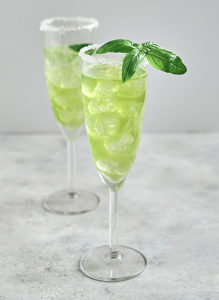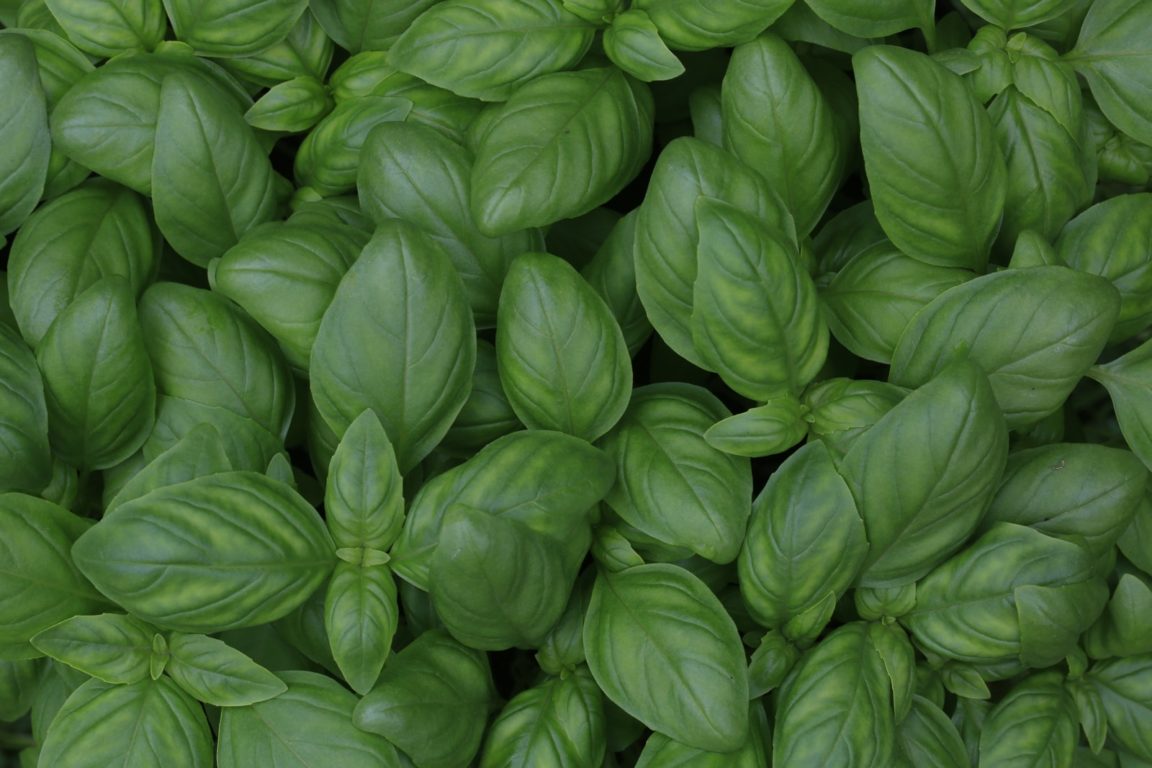Fresh herbs add flavor to food and drinks like it’s nobody’s business. It is quite popular to see them as a pizza or salad topping, or as a garnish in a cocktail (or in this case, a mocktail!). They can really give a dish that extra oomph that it needs to blow your mind.
They are also rather inexpensive to purchase and fairly low maintenance if you decide to have your own herb garden.
There are so many herbs that exist. Some even have various species underneath their umbrella. An herb that is a prime example of this is basil.
What is basil?
If you are going to have one herb in your garden, basil would be an excellent choice. It is a green, leafy herb that comes from the mint family and is easy to grow and maintain. Basil prefers at least six hours a day of sunlight and does best in warmer climates.
Basil’s incredibly rich, aromatic, and versatile flavor makes it an ideal herb to cook with. It is the primary ingredient in pesto, a flavorful and nutty sauce consisting of basil leaves, olive oil, pine nuts, garlic, and salt.
Basil also has some health benefits. It is loaded with antioxidants, is known to be a natural anti-inflammatory, and is believed to have antibacterial and antiviral properties.
Did you know that there is not just one type of basil? In fact, there are many variations of it, about 100 of them. Here are just a few of the most common types of basil.
Sweet Green Basil
Sweet green basil is the most common varietal. If you buy basil at a grocery store, or at a home and garden supply store, it most likely is the sweet green kind.
Its leaves have a curved shape and are a gorgeous medium-green color. It is also believed that sweet green basil can repel pesky mosquitoes. This type of basil is very commonly used in pesto and salads.
Thai Sweet Basil
Despite its name, Thai sweet basil has a bit more of a subtle spicy flavor with a hint of licorice when compared to its sweet green basil cousin. Thai basil leaves are green and flatter than other varietals. They also have stunning dark purple stems.
This variety of basil is used in traditional Asian dishes such as spicy sesame noodles or Thai basil chicken. When cooked at a high temperature, some types of basil can lose their flavor, but not Thai sweet basil! That is what makes it unique.
Hydroponic Basil
Now here is a fact about basil that most people are not familiar with. Hydroponic basil is not a specific type of basil, it is a method of growing it. It is grown without any soil. Basically, it is only grown in water with added nutrients to help maintain proper pH, usually between 5.5 and 6.5.
Any variety of basil can be grown in hydroponics, but there is a right way to do so. The temperature of the air in the environment it is being grown should be between 65 and 80 degrees Fahrenheit and the basil plants should receive 14 to 16 hours of light per day.
They should also be supplied with adequate nitrogen as well as calcium and magnesium supplements to help them get the nutrition that they need to flourish.
Growing basil via a hydroponic method is an excellent way to have fresh basil year-round. It can be grown indoors and in greenhouses. You’ll be glad you have access to it if you decide your pizza, salad, or beverage needs a little something extra.
Using Basil in Mocktails
Basil’s fresh and herbal flavors make it an excellent addition to any homemade mocktail and it’s yet another reason to have a basil plant of your own in your home! Just one or two leaves will do the trick for a single drink. A helpful tip is to lightly slap the leaves to release their oils.
More than likely, sweet green basil is the type of basil that you’d use in a mocktail, and for good reason. Its flavor is versatile and complementary to many other flavors so it will increase the flavor of your drink, but not overpower it.

Sweet Basil Cafe Mocktail
.
How to do make the basil-infused simple syrup
If you really want to impress your friends or any guests that come over, you can add a homemade basil-infused simple syrup to your mocktails
To do this, simply boil equal amounts of water and sugar in a small pot on the stove, stirring frequently. Add a few basil sprigs as well. You can add as much as you’d like, depending on how strong you’d like the flavor to be.
Bring the mixture to a simmer for a few minutes or until the sugar dissolves completely. Remove the pot from the heat and allow the flavors to infuse for 30 minutes.
This simple syrup will add sweetness and a touch of basil to your mocktails. Since it is liquid, you won’t have to worry about mixing in granulated sugar and waiting for it to dissolve!
One fruit that pairs beautifully with basil is strawberries and it is incredibly easy to whip up a quick mocktail using them.
You will need a few strawberries and basil leaves, a bit of lemon juice, and plain seltzer water. You can add a bit of the basil simple syrup as well for some extra sweetness!
Muddle the strawberries and basil leaves together in a pint glass. This will crush up the strawberries and release the oils from the basil.
Add a splash of lemon juice and basil simple syrup (if you choose to use it) and add ice. Top it off with the seltzer water, give it a good stir, and that’s all!
For a garnish, add a sliced strawberry and small basil sprig to make it look extra pretty. This refreshing summer mocktail is perfect to serve guests at your next gathering.
Don’t be afraid to experiment with basil in your food and drinks, you never know what delicious new flavor combination you might discover!





